Pancreatic stump closure techniques and pancreatic fistula formation after distal pancreatectomy: Meta-analysis and single-center experience
- PMID: 29897920
- PMCID: PMC5999073
- DOI: 10.1371/journal.pone.0197553
Pancreatic stump closure techniques and pancreatic fistula formation after distal pancreatectomy: Meta-analysis and single-center experience
Abstract
Background: Pancreatic fistula/PF is the most frequent and feared complication after distal pancreatectomy/DP. However, the safest technique of pancreatic stump closure remains an ongoing debate. Here, we aimed to compare the safety of different pancreatic stump closure techniques for preventing PF during DP.
Methods: We performed a PRISMA-based meta-analysis of all relevant studies that compared at least two techniques of stump closure during DP with regard to PF rates/PFR. We further performed a retrospective analysis of our institutional PFR in correlation with stump closure techniques.
Results: 8301 studies were initially identified. From these, ten randomized controlled trials/RCTs, eleven prospective and 59 retrospective studies were eligible. Stapler closure (26%vs.31%, OR:0.73, p = 0.02), combination of stapler and suture (30%vs.33%, OR:0.70, p = 0.05), or stump anastomosis (14%vs.28%, OR:0.51, p = 0.02) were associated with lower PFR than suture closure alone. Spleen preservation/splenectomy, or laparoscopic/open DP, TachoSil®, fibrin-like glue-application, or bioabsorbable-stapler-reinforcements (Seamguard®) did not influence PFR after DP. In contrast, autologous patches (falciform ligament/seromuscular patches) resulted in lower PFR than no patch application (21.9%vs.25,8%, OR:0.60, p = 0.006). In our institution, the major three techniques of stump closure resulted in comparable PFR (suture:27%, stapler:29%, or combination:24%). However, selective suturing/clipping of the main pancreatic duct during pancreatic stump closure prevented severe PF (p = 0.02).
Conclusion: After DP, stapler closure, pancreatic anastomosis, or falciform/seromuscular patches lead to lower PFR than suture closure alone. However, the differences are rather small, and further RCTs are needed to test these effects. Selective closure of the main pancreatic duct during stump closure may prevent severe PF.
Conflict of interest statement
The authors have declared that no competing interests exist.
Figures
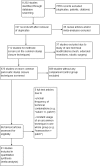
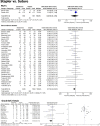
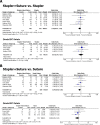
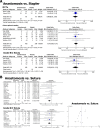
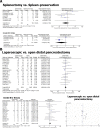
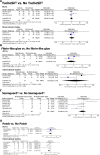
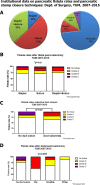
References
-
- Huttner FJ, Koessler-Ebs J, Hackert T, Ulrich A, Buchler MW, Diener MK. Meta-analysis of surgical outcome after enucleation versus standard resection for pancreatic neoplasms. Br J Surg. 2015;102(9):1026–36. doi: 10.1002/bjs.9819 . - DOI - PubMed
-
- Chua TC, Saxena A. Extended pancreaticoduodenectomy with vascular resection for pancreatic cancer: a systematic review. J Gastrointest Surg. 2010;14(9):1442–52. doi: 10.1007/s11605-009-1129-7 . - DOI - PubMed
-
- Diener MK, Knaebel HP, Witte ST, Rossion I, Kieser M, Buchler MW, et al. DISPACT trial: a randomized controlled trial to compare two different surgical techniques of DIStal PAnCreaTectomy—study rationale and design. Clin Trials. 2008;5(5):534–45. doi: 10.1177/1740774508096140 . - DOI - PubMed
-
- Bilimoria MM, Cormier JN, Mun Y, Lee JE, Evans DB, Pisters PW. Pancreatic leak after left pancreatectomy is reduced following main pancreatic duct ligation. Br J Surg. 2003;90(2):190–6. doi: 10.1002/bjs.4032 . - DOI - PubMed
-
- Goh BK, Tan YM, Chung YF, Cheow PC, Ong HS, Chan WH, et al. Critical appraisal of 232 consecutive distal pancreatectomies with emphasis on risk factors, outcome, and management of the postoperative pancreatic fistula: a 21-year experience at a single institution. Arch Surg. 2008;143(10):956–65. doi: 10.1001/archsurg.143.10.956 . - DOI - PubMed
Publication types
MeSH terms
LinkOut - more resources
Full Text Sources
Other Literature Sources

